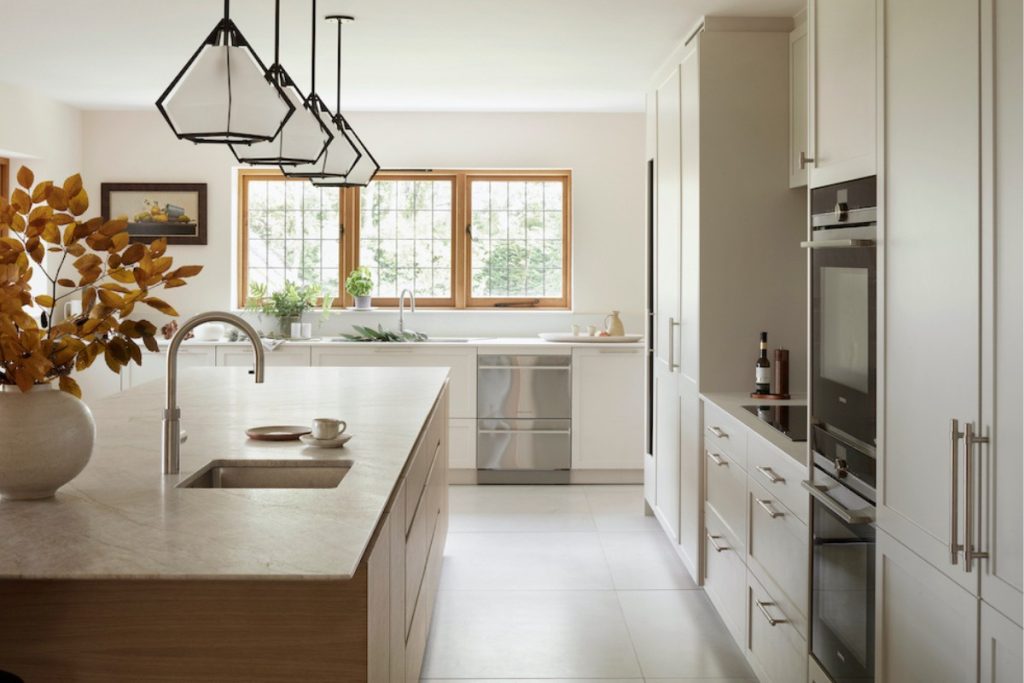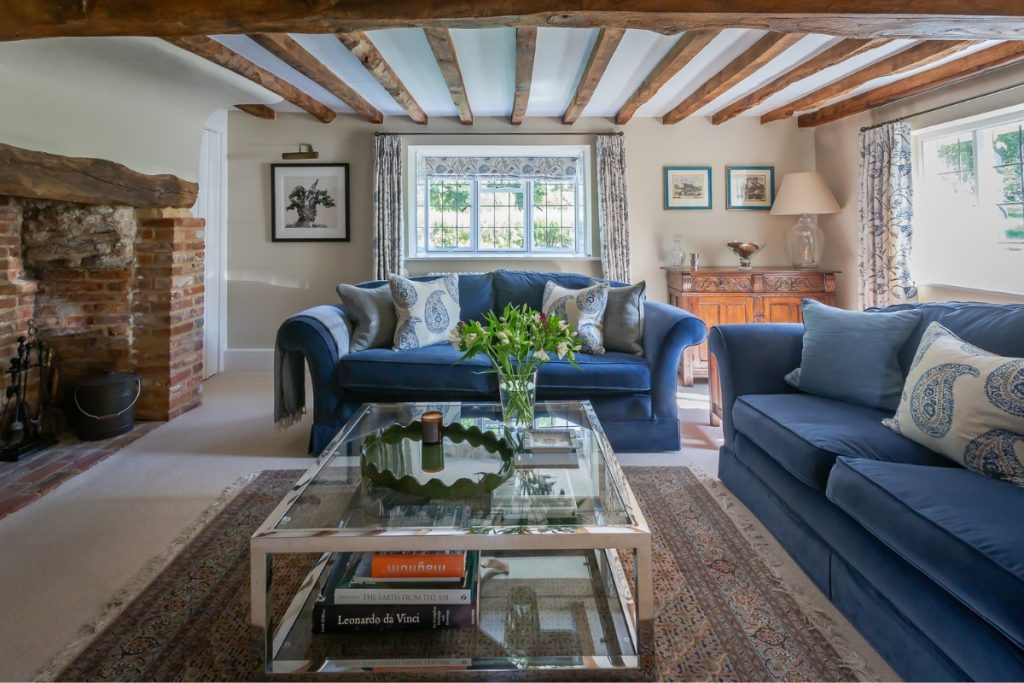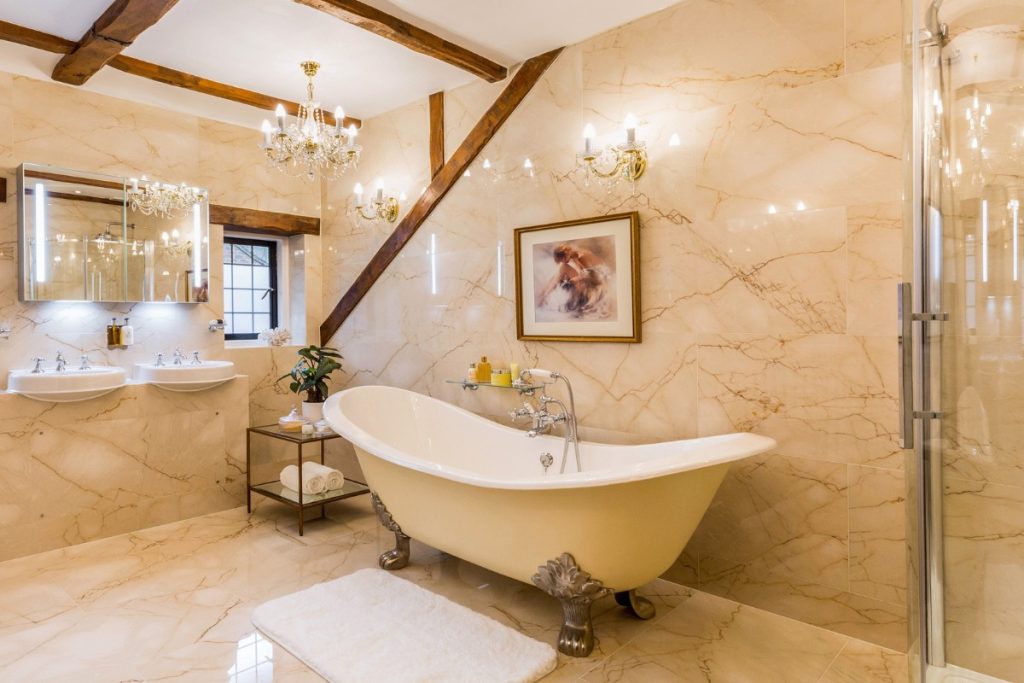 12th April 2022 | IN DESIGN ADVICE | BY SBID
12th April 2022 | IN DESIGN ADVICE | BY SBIDAn interior designer’s portfolio is a digital business card and your best marketing tool. It’s a good idea to put time and effort into your portfolio as it’s the only evidence clients have of the quality of your workmanship and skill. If you aren’t able to showcase previous projects using high-quality photographs, a client won’t be able to determine whether your style is going to suit what they’re looking for. Being an interior designer requires you to create a business that is successful and profitable. You can do this through quality services and an impressive portfolio to showcase your talent.
If you’re an interior design student, freelance designer or interior design company, here are our tips for putting together an interior design portfolio.
What are the benefits of a quality interior design portfolio?
An interior design portfolio is a showcase of your previous projects and an indicator of the standard of work you are able to achieve. Without this, prospective clients may not choose you to complete their project. When a client is searching for a designer, their portfolio is what they will rely on to indicate the kind of style you design with. If your portfolio portrays a variety of styles, it will be much more appealing. This will help your potential clients visualise how your design can transform their space and will likely be the main factor somebody chooses to work with you.
Without a strong portfolio, you will miss out on a lot of opportunities because clients simply can’t see what you’re capable of. A strong portfolio has the potential to bring in a lot of clients and showcase your skill and expertise through the interior design services you provide.
How to create a strong interior design portfolio
Choose a platform
The first thing you will need to do is choose how you are going to present your portfolio. You will need a platform that is reliable and suits your style while giving you enough creative freedom to make it unique to you. It’s advisable to do a bit of research on the best software programme for you, as there are many different types on the market, all at different price points. You could choose software such as Adobe Illustrator or Canva, both of which will give you a professional look for your portfolio. These will offer a range of templates and it is simply a matter of choosing one which best represents your style or business.
It’s important to have a portfolio that is laid out with a smart design as this will enhance the look of plain images and catch the eye of clients. Whether you are choosing to showcase your portfolio online, in a brochure, or both, choosing a quality software and template is sure to bring your designs to life. Putting together a quality website is also a good idea as it gives you a place to present your portfolio.
Design
The next step is to put together the design. You may have chosen a template, but you will still need to personalise it so it is a reflection of your capabilities. Because interior design is a visual art, it’s important you make the right choices when choosing text, colour and layout. If you have a poorly designed portfolio, this will be a reflection of your interior design skills and will put clients off if it isn’t up to par.
Try to put as much of your personality into the pages as possible so that your portfolio stands out from the other designers you’re competing against. However, you should still try to keep it as neat and professional as possible as a messy portfolio won’t sell your expertise.
Gather portfolio material
Finding the best quality images, sketches and designs are how you will best portray what you are capable of. If you are a student or a newcomer to the industry, you can include the work you produced while studying as a representation of your abilities. This may include sketches, drawings, presentations, certifications and credentials. You can also include designs you have created in practice or reimagine existing designs in your own unique way.
If you are an established interior designer or you already have a few real-world projects under your belt, make sure you have the best possible photos. You may have designed a beautiful room, but without having a good photo of it, clients will not be able to see what you created. Having high-quality photos with correct lighting will help tie the portfolio together and create a seamless experience from start to finish.
Include a variety of different rooms and try to have at least one bedroom, one kitchen and one dining room so that clients can see your work in different contexts and aesthetics. It would help to also provide a variety of styles so that you can show clients you are a versatile and understanding designer capable of taking your clients wants and needs into consideration. No interior design project is the same so make sure your portfolio is diverse.
What to include
You may want to include the following in your portfolio:
- An about page. A page that explains who you are and what kind of interior designer you are. Keep it simple and to the point and avoid too many words.
- Education and experience. Give a brief description of what education you have and how much experience you have had in the field.
- Outline your services. You will need to provide your clients with a breakdown of the services you can offer them and your promises to the client.
- Examples of previous projects. This is where you have the opportunity to showcase your past projects and your standard of design services.
- Benefits of working with you. Outline what makes you different from your competitors and how you aim to exceed client expectations.
- Contact information. How can clients get in touch with you? Make sure to include your phone number, email address and social media handles.
- Testimonials. If you have previous reviews or testimonials from clients, include these in your portfolio so you can show off any happy clients you’ve had in the past.
Become an accredited interior designer with an impressive portfolio
Achieving interior design institute accreditation is a fantastic way to prove to clients that you are a capable designer. The Society of British & International Interior Design (SBID) is an interior design body created to regulate and promote the profession of interior design. This helps clients find quality designers they can trust, by searching through the designer directory of accredited designers. Accreditation is important as it acknowledges and confirms that a designer’s process, skill, experience and knowledge can fit a client brief.
In order to become an accredited designer, you will need to be able to showcase your talent in the form of your portfolio. Accredited designers will have completed three years of study, three and a half years of practice, 24 SBID CPD points and have professional indemnity insurance. You can become accredited as an interior designer, an interior fit-out specialist, a product provider or a student. This gives you the opportunity to further develop your portfolio and be listed alongside incredible designers across the world.
The Benefits of an Interior Design Accreditation from SBID
Accreditation is a fantastic way to improve your portfolio and help you gain momentum in an increasingly competitive industry. SBID accreditation helps put you ahead of your competitors and show your clients what you are capable of. The benefits of SBID accreditation include:
- Public listing in the SBID designer directory. This allows prospective clients to search for designers to complete their projects. The directory can be filtered by design specialisms, location and keywords.
- Multi-use contracts for Interior Design. The legal requirements of the procurement of interior design works, services and goods can be complex. The SBID Short Contract and NEC Professional Service Contracts will assist you with these aspects of the business.
- Exclusive partner benefits. You’ll gain access to free tickets, VIP access to local and international industry events, press and media opportunities and expert advice. As well as insurance solutions for your business.
- Access to our member-only portal. With SBID, you’ll be able to explore approved trade suppliers as well as access to live and on-demand CPD training and a variety of professional resources.
To learn more about our services or how you can become accredited by an interior design body, get in touch. Visit our website today to view our designers directory and get started on your accreditation journey today.



